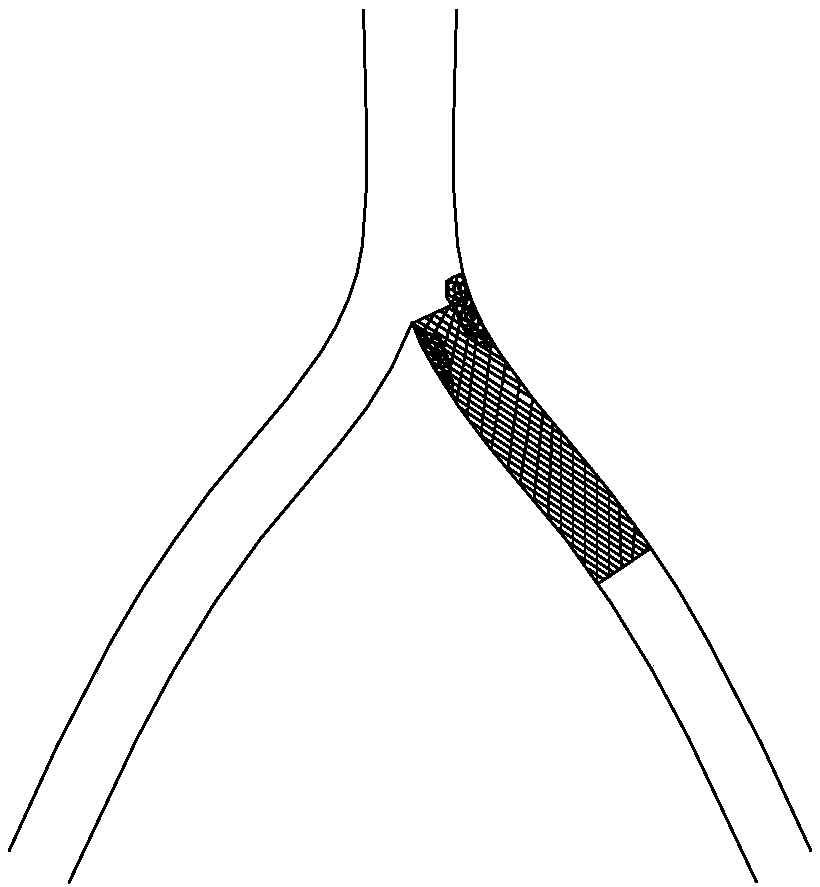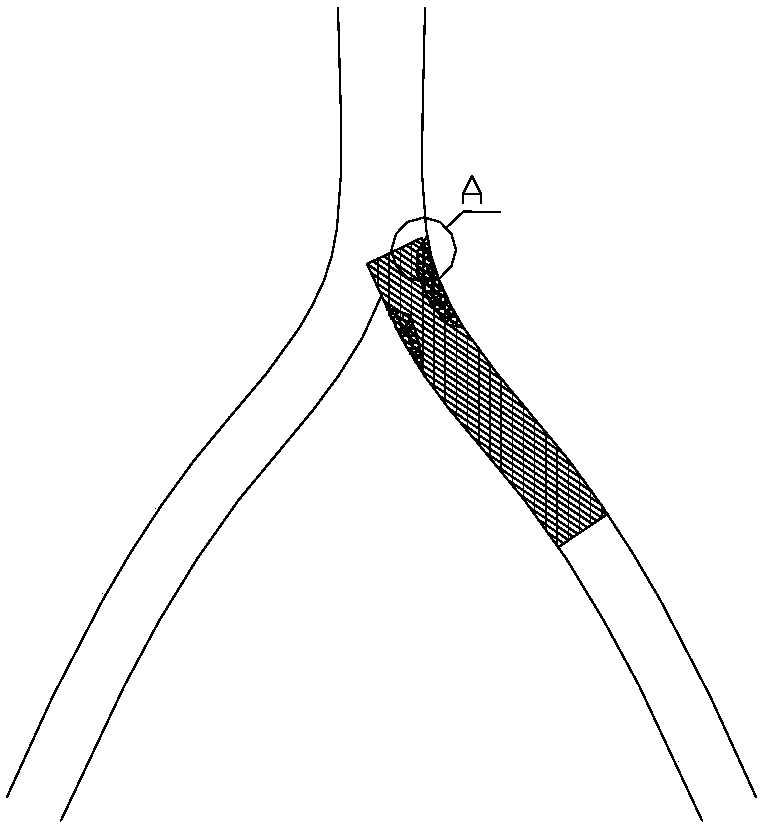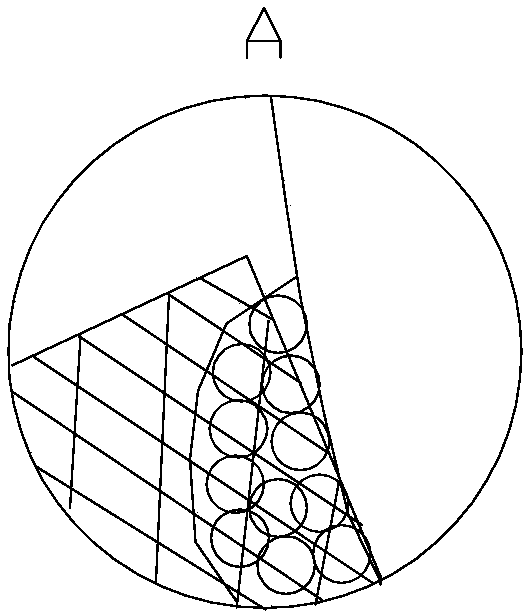Stent for near bifurcation part lesion
A technology of parts and bifurcations, applied in stents, medical science, prostheses, etc., can solve the problems of the influence of main blood vessels and the inability to completely cover the lesion, and achieve the effect of uniform distribution, good support effect, and good flexibility
- Summary
- Abstract
- Description
- Claims
- Application Information
AI Technical Summary
Problems solved by technology
Method used
Image
Examples
Embodiment 1
[0041] Embodiment 1, as Figure 2-4 As shown in , 9, a stent for lesions near bifurcations is a tubular stent formed by a plurality of wave-shaped supports 1111, 1121, 121, 131 axially connected together, and the tubular stent includes sequentially connected proximal ends The supporting mechanism 110, the central supporting mechanism 120 and the distal supporting mechanism 130 have three parts in total; the central supporting mechanism 120 and the distal supporting mechanism 130 are ring structures respectively; the proximal supporting mechanism 110 includes a The circumferential support portion 111 connected to the zone support mechanism 120, the directional support portion 112 arranged at the proximal end of the circumferential support portion 111; the circumferential support portion 111 is a ring structure; the directional support portion 112 is open in the circumferential direction ring, and its proximal end surface is non-flush to form a local support in the circumferenti...
Embodiment 2
[0062] Example 2, such as Figure 5 As shown, this embodiment is based on Embodiment 1 with some improvements.
[0063] A stent for lesions near the bifurcation, which is a tubular stent formed by a plurality of wave-shaped supports 1111, 1121, 121, 131 axially connected together, the tubular stent includes a proximal support mechanism 110, a middle The zone supporting mechanism 120 and the distal supporting mechanism 130 are composed of three parts, which are the same as those in Embodiment 1, except for the structure of the connection assembly 122 .
[0064] A set of connecting components 122 is provided with at least two connecting rods 1221, and the connecting rods 1221 are fixed between the crest unit 1211 or the trough unit 1213 of one wave-shaped support 1121, 121, 131 and the adjacent wave-shaped support 121, 121, 131 between the wave rods 1212 . The connecting rods 1221 in the same connecting assembly 122 may be arranged in parallel, or arranged in a figure-eight or...
Embodiment 3
[0067] Example 3, such as Figure 6-7 As shown, this embodiment is based on embodiment 1 or 2 with some improvements.
[0068] like Image 6 As shown, the difference from Embodiment 1 or 2 is that the lengths of the probes 1212 of the wave support 111 that make up the proximal support mechanism 110 are not uniform, and the number of probes 1212 in a row of the proximal support mechanism 110 is Similarly, part of the length of the inner wave rod 1212 gradually extends toward the proximal end along the axial direction, thereby forming a slope structure of the proximal support mechanism 110 . That is, the circumferential support portion 111 and the orientation support portion 112 are formed due to the elongated waveform amplitude.
[0069] The rest of the structures are the same as those in Embodiment 1 or 2, and will not be repeated here.
[0070] like Image 6 As shown, in order to further strengthen the adhesion between the stent and the inner wall of the blood vessel, in ...
PUM
 Login to View More
Login to View More Abstract
Description
Claims
Application Information
 Login to View More
Login to View More - Generate Ideas
- Intellectual Property
- Life Sciences
- Materials
- Tech Scout
- Unparalleled Data Quality
- Higher Quality Content
- 60% Fewer Hallucinations
Browse by: Latest US Patents, China's latest patents, Technical Efficacy Thesaurus, Application Domain, Technology Topic, Popular Technical Reports.
© 2025 PatSnap. All rights reserved.Legal|Privacy policy|Modern Slavery Act Transparency Statement|Sitemap|About US| Contact US: help@patsnap.com



